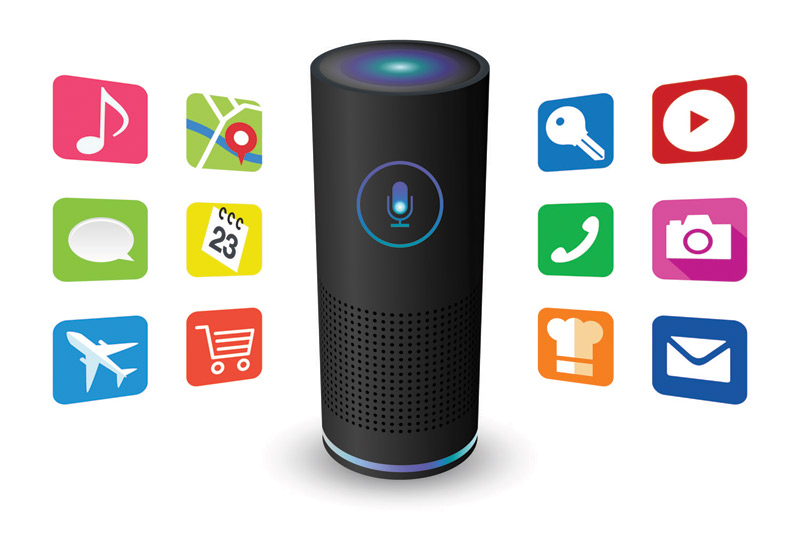A client recently asked me to explain how virtual assistant devices like Amazon Echo and Google Home work. While doing my research, I read that early this year, NPR and Edison reported 21% of U.S. adults owned smart speakers. As they become more prevalent, it’s good to know how they work and why so many people use them.
the technology
These devices rely heavily on the Internet, voice recognition, artificial intelligence and access to content or other devices. Your device needs to be connected to the Internet via Wi-Fi to access information you request. Speech recognition software, which has been around since the late ‘50s, allows these devices to listen for a ‘wake’ command (“OK Google” or “Alexa”) and then record what you say. The recordings are saved so you can go back and tell the system what worked, or you can delete them. Depending on the device, it can access content you request (“What are the best restaurants near me?”) or perform tasks you ask it to do (“Alexa, turn off the living room lights.”).
how are they used?
In a 2017 study by VentureBeat, 75% of those surveyed use their smart speaker to play music, although a majority also use it to get the latest news, weather, sports scores and answers to pressing questions. No longer do you have to pull out your cell phone at the dinner table to find out what band is playing. You can just ask Alexa. If you need a laugh, ask Google to tell you a joke.
There are many functions you can set up on the devices, like asking Alexa to remind you to take your medicine at a specific time. Or, if you want to annoy your spouse, you can have Alexa ask him every day if he fed the frogs. (That was not a well-received reminder at my house!) Most Internet of Things devices, such as light bulbs, thermostats, refrigerators and dishwashers, can be controlled through these devices. You also can place calls to people and send texts. Be warned that you easily can spend an entire day exploring the device’s different uses!
privacy and security
Many people refuse to have these devices in their homes due to privacy and security concerns. It is very important that your Internet network and Wi-Fi are highly secured with strong passwords, updated firmware and firewall protection. If you are concerned about the device listening to you, there is a microphone button you can mute, but you won’t be able to give commands. Also make sure that your passwords to every other account and device you connect to are secured. Remember, in order for the devices to work, your commands will be recorded and saved in the iCloud.
where are we headed?
WordStream reports that by 2020, 50% of all searches will be by voice, and 30% will be without a screen. I love my devices (I own three), but I mainly use them to listen to music, podcasts or the news. You will see more companies making it easier to buy their products through voice command, and as consumers, we will continue looking for ways to automate our homes and offices.
Thanks to everyone who has shared their thoughts with me on past articles. I love hearing from you, so let me know what you would like to learn about in the future. Email sheila.burkett@sprydigital.com.
Sheila Burkett is an information technology expert and CEO of Spry Digital, an interactive design agency delivering smart digital solutions. Follow Spry Digital on Twitter (@sprydigital), Facebook (facebook.com/sprydigital), Instagram (@sprydigital) or LinkedIn (linkedin.com/company/spry-digital-llc).








